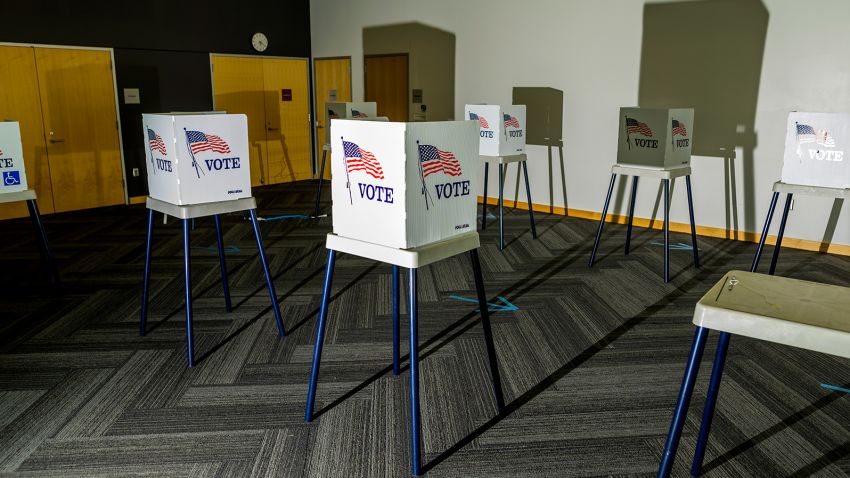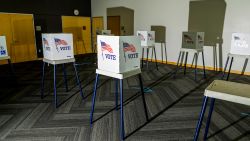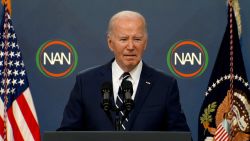It was a referendum. Now it’s a choice.
For political professionals in both parties, that’s the capsule explanation for why the Democratic position in the midterm elections appears to have improved so much since summer began.
When the election looked to be primarily a referendum on the performance of the Democrats who control the White House and Congress, Republicans were optimistic that a towering “red wave” would carry them to sweeping gains in November.
But with evidence suggesting more voters are treating the election as a comparative choice between the two parties, operatives on both sides are bracing for a closely contested outcome that could include an unusual divergence in results for the House and those in Senate and governor races.
“It feels to me to be more like a shallow red puddle that we’re walking through, rather than a tsunami of sorts,” says Republican strategist John Thomas.
The key to the change in expectations is a shift in the issues motivating the electorate. Earlier this year, the debate between the parties centered on inflation, the economy, crime, immigration and President Joe Biden’s stalled legislative agenda in Congress – all issues that motivated the Republican base and alienated many swing voters from Democrats. But a series of dramatic events over the past few months have elevated an entirely different set of issues: gun violence, threats to democracy, climate change and, above all, abortion rights.
The effect has been the political equivalent to one weather system displacing another.
While the focus on the economy and crime encouraged voters to simply grade the performance of the party in power – the classic “referendum election” frame – the new concerns have highlighted stark differences between the two parties and defined the election more as a choice between antithetical directions for the nation. That new frame has both energized Democratic base voters who earlier appeared disenchanted or tuned out and reminded many swing voters why they have recoiled from the Donald Trump-era Republican Party.
While midterm elections are normally “a referendum on incumbents and economic reality … we are not in normal times,” says Jenifer Fernandez Ancona, vice president and chief strategy officer of Way to Win, a liberal group that funds organizations and campaigns focusing on voters of color. “Republicans have embraced this Trump-ism, these brazen assaults on our freedoms and our families and are rejecting the policies voters actually want. That [creates] an opportunity for us to re-turnout our surge voters from 2018 and to move conflicted voters over.”
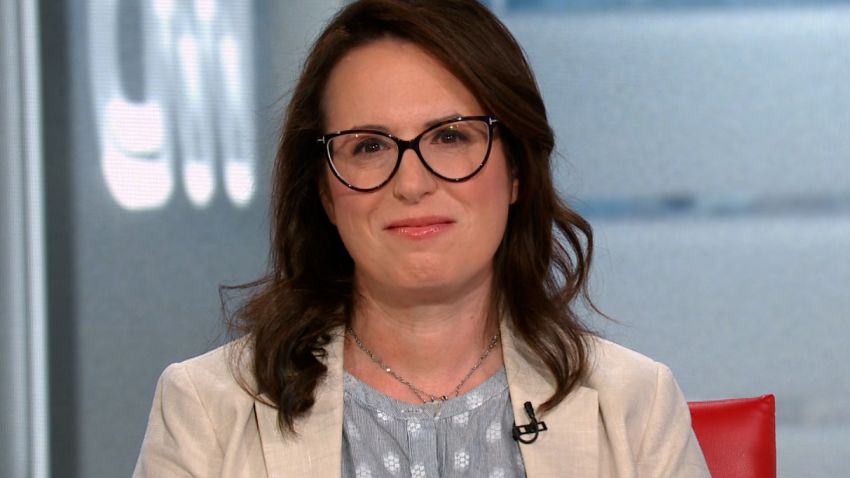
The new focus on issues such as gun violence, threats to democracy and abortion has not erased the threats to congressional Democrats from the public’s mostly negative assessments about the economy, or its enduring concern about crime. But to a far greater extent than earlier this year, it has provided Democratic campaigns an opportunity to shift the campaign discussion from how voters feel about Biden’s performance to whether they support the direction Republicans would take the country, especially since the GOP nominated so many Senate and governor candidates who have unreservedly embraced Trump.
“The conditions have changed, and we have to step into that and tell this story as clearly as we can,” says Fernandez Ancona. “We need voters to see the midterm as a crossroads, not a referendum.”
Democratic hopes of avoiding the worst in November will likely pivot on whether they can successfully convince enough voters, particularly voters in their presidential-year coalition who might otherwise skip a midterm election, to see the contest in those terms.
An NBC poll released last week, conducted by the Republican polling firm Public Opinion Strategies and the Democratic firm led by Peter Hart and Geoff Garin, captured the rare split screen dynamic that’s reshaping the campaign. When the pollsters asked respondents to identify their top concerns in the midterm election, they found an unusually wide separation between voters in each party’s coalition.
“It is a really unusual election,” said Republican pollster Bill McInturff of Public Opinion Strategies. “Republicans have significant advantages on their set of issues (inflation, economy, crime, border security) and Democrats enjoy significant advantages on issues of concern to their voters (abortion, climate change, guns, health care). There is no overlap, no competitive issues. This means each party has an unusual opportunity to try to create their own narrative to their own voters on what this election is about.”
The poll found that significant numbers of voters remain focused on the issues that dominated the debate earlier this year, and that those voters backed Republicans by wide margins for Congress. Nearly three-fifths of voters who cited the cost of living as one of their top two concerns in the survey preferred Republicans, as did about three-fifths of those focused on crime, two-thirds of those who raised the economy, and nearly 9-in-10 of those who identified immigration as a principal concern, according to detailed results provided by POS.
But Democrats, uncommonly, had comparable advantages on a different set of issues that cumulatively ranked as top-two priorities for nearly as many voters as the concerns that advantaged Republicans. In the survey, Democrats won about two-thirds of voters focused on either gun violence or threats to democracy, over 7-in-10 of those who cited abortion, and more than 8-in-10 who identified climate change.
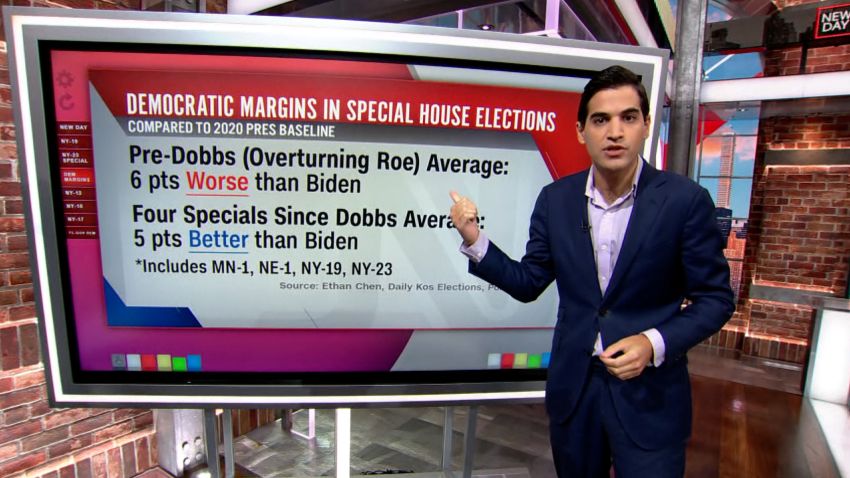
All of these issues have gained in prominence since the spring: gun violence since the Ulvade, Texas, massacre, abortion since the Supreme Court decision that overturned the national right to the procedure, threats to democracy amid the disclosures of the House committee investigating the January 6, 2021, insurrection and the revelations about Trump’s mishandling of classified material, and climate since the unexpected passage of the Democrats’ slimmed down reconciliation bill. That increased visibility represents the new weather system that has at least partially pushed aside the dark clouds of inflation and economic discontent that hung over Democrats for most of this year.
“The conversation in the nation has changed,” says Michael Podhorzer, former chief political adviser to the AFL-CIO and chair of the Analyst Institute, a collaborative of progressive groups that conducts extensive public polling. “In 2021, the conversation was about what Democrats were or were not doing – inflation, Afghanistan, crime – the classic context for a party-in-power rout. Since June, the conversation has shifted to what returning Republicans to power would mean.” That shift in the conversation, he argues, is “reminding the 81 million people who voted against Trump in 2020” about why they turned out to oppose him and increasing the odds that more of them will show up again in 2022.
The Way to Win group is arguing that Democrats should crystallize the new issues rising in prominence into a straightforward but sharp message: Americans need to vote for Democrats to “protect our freedoms” against “Trump Republicans [who] want to take away freedom from all who do not look, live, and love like them.” Abortion is an especially powerful symbol of that idea, Fernandez Ancona says.
“We have even heard people in focus groups say, ‘prices go up and down, but I can’t prevent myself from being raped and not being able to have an abortion,’” she said. “The idea that something everyone had is now being taken away is so strong it’s overriding” other concerns.
Like many GOP strategists, Thomas believes economic assessments ultimately will motivate more voters than abortion. But he agrees the campaign no longer revolves solely around the economy.
“The Republicans only hope to regain a wave is if there is a uniting singular issue that refocused all voters” and concentrated discontent with Biden’s performance, the way inflation did earlier this year, he said.
“But right now, with this split in the electorate, there’s not one big thing that the voters are unanimously going, ‘Screw those guys, I want to blame somebody,’” Thomas added. “The fragmentation really has benefited the Democrats.”
Many analysts believe that the traditional referendum dynamics may prove most powerful in House races, while many Senate and governor’s races already show signs of evolving into much more of a choice kind of election. “The difference in statewide races is that the voters know the candidates better and so a combination of good candidates [running against] bad candidates are better able to transcend national tides,” says Garin, the Democratic pollster.
By contrast, Garin notes, “House races in some ways are more parliamentary in nature” –meaning that they turn less on assessments of the individual candidates, who are often not that well defined for voters, than on broader views about the two parties and conditions in the country. The clearest measure of the increasingly parliamentary nature of House races over the past several decades has been the tightening correlation between voters’ attitudes toward a president and their willingness to vote for House candidates from his party.
As I’ve written, in exit polls, the share of voters who disapprove of a president’s performance and vote against congressional candidates from his party has increased from about 75% in the late 1980s, to over 80% from the 1990s through the early 2000s, to fully 90% by 2018. But in multiple polls this year, Republican congressional candidates are not drawing nearly that much support from voters who disapprove of Biden.
That’s a measure of resistance to the Trump-era GOP even among voters disenchanted with the Democrats’ performance. Particularly noteworthy is that a recent Pew Research Center survey found congressional Democrats leading among voters who somewhat disapproved of Biden’s performance, while the NBC survey found them essentially breaking even with those voters. That’s a remarkable divergence from recent experience: the opposition party won about two-thirds of voters who somewhat disapproved of Trump in 2018 and former President Barack Obama in 2010, according to exit poll results provided by the CNN polling unit.
These dynamics (along with a slight but perceptible rise in Biden’s approval rating) help explain why some independent analysts, such as the Cook Political Report, have lowered their expectations on the number of seats Republicans may gain in November. But even so, the tendency of voters dissatisfied with the president to back the opposition party in House elections is strong enough that most analysts still believe Republicans can gain enough seats to capture the majority (even if, for the first time, some Democratic analysts see a path to defying the usual midterm history and maintaining control).
It’s in higher-profile Senate and governor’s races that the new issue dynamics are creating the greatest opportunity for Democrats to rise above general discontent over the country’s direction.
With their greater visibility, those races, as Garin noted, are inherently more of a choice. And, at least for now, multiple statewide Democratic candidates facing Trump-endorsed opponents are running strongly and drawing support that considerably exceeds Biden’s approval rating in their states. Races that now fit that description include the Senate contests in Pennsylvania, Georgia, Arizona and Ohio, as well as governor’s races in Michigan, Wisconsin, Pennsylvania and Arizona.
Democrats are far from guaranteed victory in any of those races. But in all of them, they have fortified their position by shifting the campaign focus from discontent over Biden’s performance and inflation to the personal and ideological vulnerabilities of their GOP opponents, particularly their hardline stances against abortion. “In the House you can have a candidate who can’t put three sentences together and no one finds out,” says Jim Kessler, executive vice president for policy at Third Way, a centrist Democratic group. “But you can’t do that in a Senate race. There’s too much money that’s spent, there’s too much coverage. The governor races [are] the same thing.”
If House races unfold as more of a referendum, and statewide contests play out more like a choice, that creates the possibility of an unusual divergence in the midterm result.
Almost always, the party that wins House seats in a midterm also gains Senate seats, and for that matter, adds governorships. Since World War II, the party that gained House seats simultaneously lost Senate seats only in 2018, 1970 and 1962. Over that nearly eight-decade span, no party ever gained House seats and simultaneously lost ground in both the Senate and governor’s races.
Yet a November outcome in which Republicans add only a modest number of House seats and fail to gain ground, or even lose some, in Senate and governor’s contests, no longer seems impossible. All the dynamics boosting Republicans this year haven’t disappeared. But they are no longer the only forces shaping the campaign atmosphere. And that could mean the midterm election produces far more of a split decision than almost anyone considered possible earlier this year.

